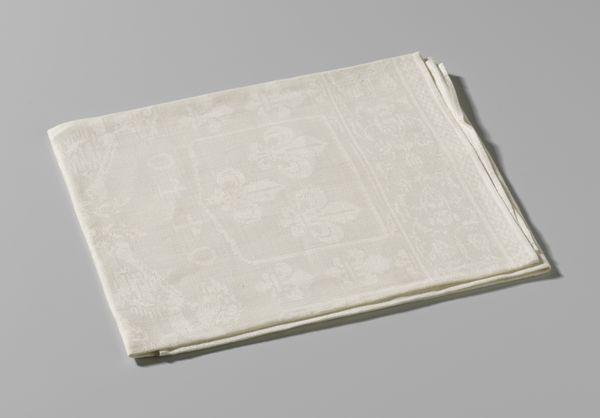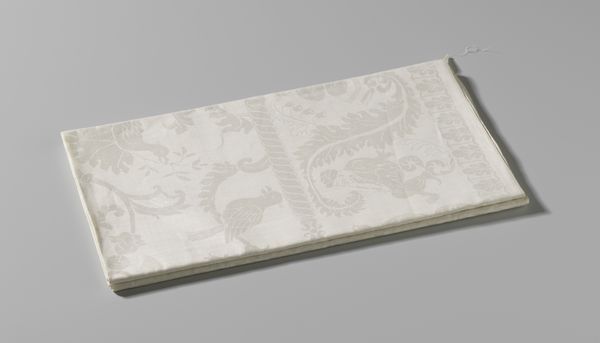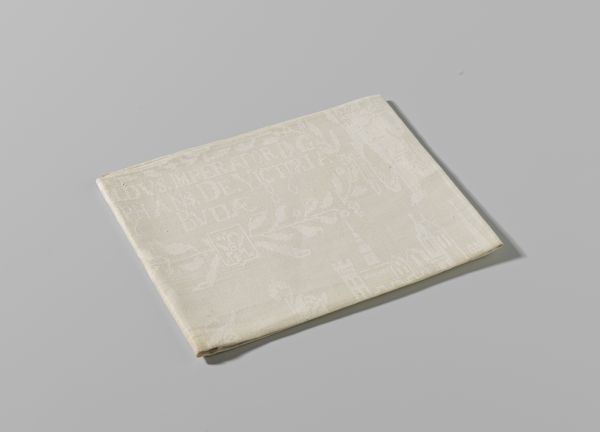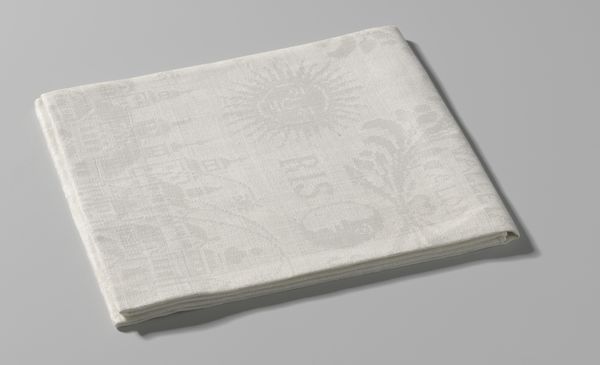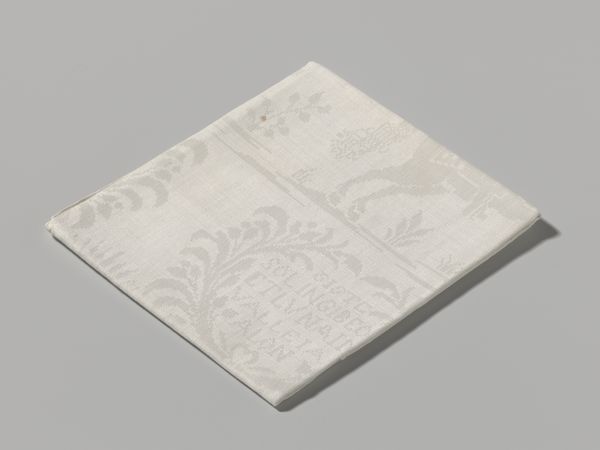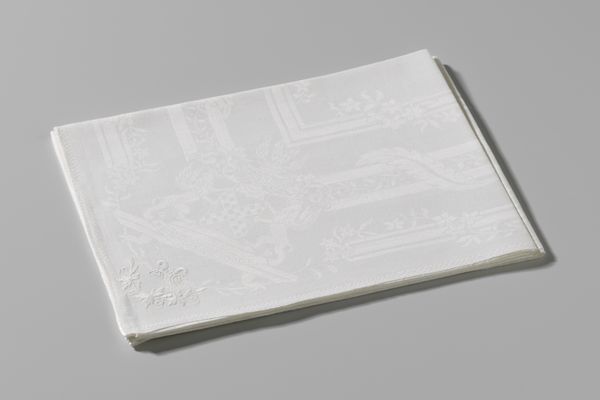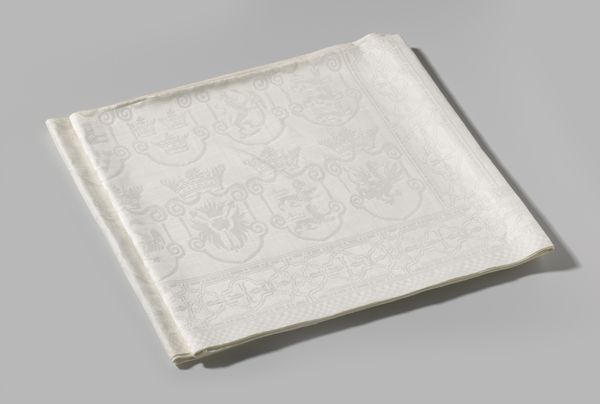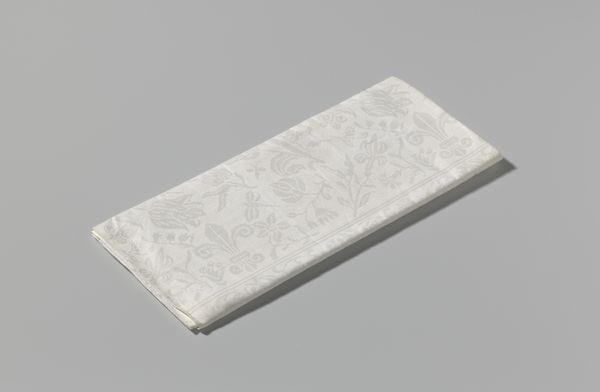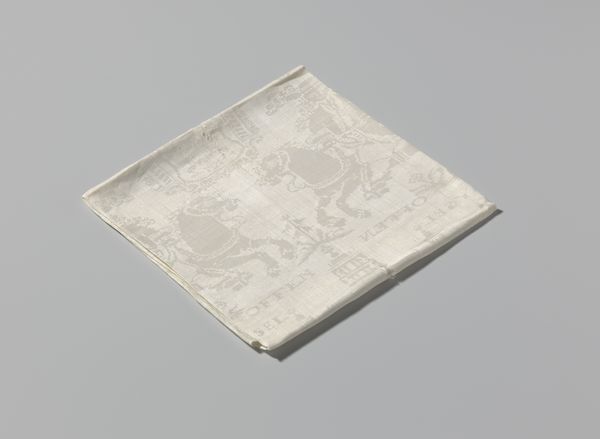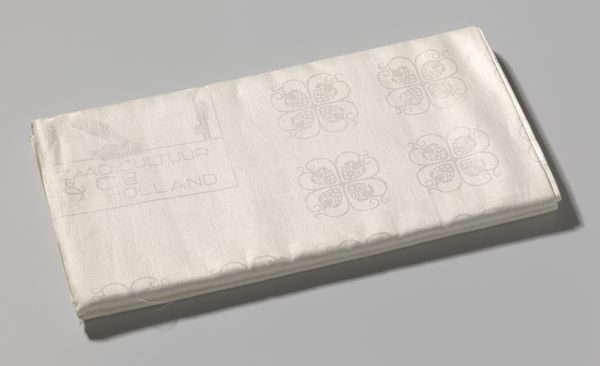
weaving, textile
#
dutch-golden-age
#
weaving
#
textile
#
geometric
Dimensions: height 98 cm, width 72 cm
Copyright: Rijks Museum: Open Domain
Curator: Here we have an intriguing artifact: a linen damask napkin created in 1604. The piece, whose creator remains unknown, is titled "Servet met de Oranjeboom en het wapen van prins Maurits," which translates to "Napkin with the Orange Tree and the coat of arms of Prince Maurice". Editor: The subdued color palette of the fabric creates an immediate sense of calm dignity. Its off-white coloring is contrasted only by the intricacy of its weaving patterns, presenting complex imagery almost invisibly to the untrained eye. Curator: Yes, the subtlety speaks volumes. The dominant motif, the orange tree, serves as an emblem of the House of Orange-Nassau, a symbol of Dutch identity and the struggle for independence from Spanish rule during that era. The inclusion of Prince Maurice's coat of arms is very explicit in connecting the imagery to this prominent political family. Editor: I find it interesting how the geometric forms blend with more organic shapes, mirroring a cultural interest in establishing order whilst revering nature’s forms. The execution creates a surface pattern, almost textile-based semiotics that offers an insight into both function and purpose. Curator: I agree. Table linens weren’t mere utilitarian objects. They became a canvas to project national pride and allegiances. Can you imagine dining in the era and glimpsing your support for Prince Maurice displayed on your dinner setting? What an amazing symbolic reinforcement! Editor: Beyond politics, I am stuck by the precision involved in weaving such clear representations. You see this same quality of detail replicated in metalworking during the Golden Age period. Its appeal to the sense of touch would give a subliminal impact far greater than its subdued coloring. Curator: Looking at the Orange tree, one finds cultural continuity woven in textiles! Throughout periods of conflict and reformation, these objects became statements, quietly proclaiming political leanings. Each woven element becomes a mnemonic key that recalls cultural memory to those who can decipher the message. Editor: I can certainly say that observing the structure, motifs, and materiality in the napkin elevates its existence from the level of something utilitarian to a thing with deep cultural complexity. Thank you for helping unlock the symbols and deeper significance in its aesthetic presentation!
Comments
No comments
Be the first to comment and join the conversation on the ultimate creative platform.
